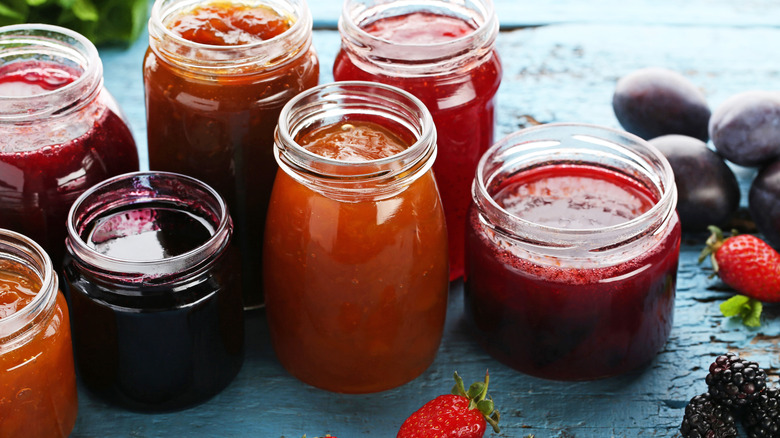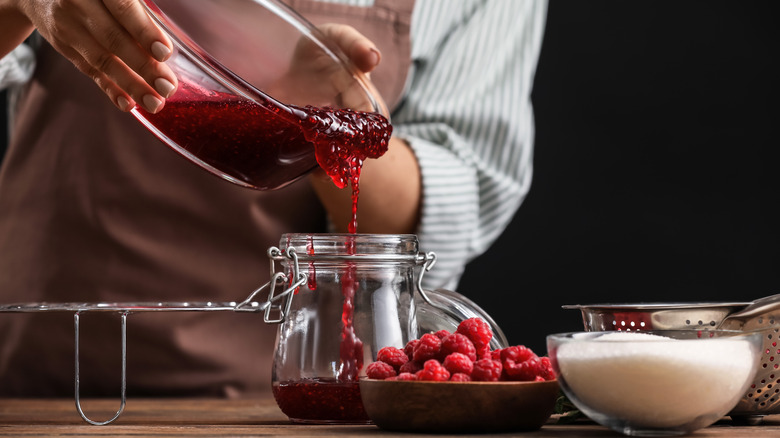What Makes Jam Different From Jelly
Lay the avocado aside, and keep it sweet by reaching for the jam or jelly jar, instead. Biscuits, toast, and peanut butter sandwiches love the addition of a spoonful of the sweet stuff, so indulge! Add gourmet flair to at-home appetizers by serving a brick of brie with jam or sprinkling goat cheese over jelly; serve with crackers, of course. From candied bacon and jam-topped ice cream, casual snacking has never been so lip-smacking good.
There are many ways to use jams and jellies besides spreading them on bread (via Dishably). Each flavor will provide a unique taste to your dish. You must know the difference between jam and jelly to know which to use when preparing your fruity masterpiece. Each provides a distinct flavor and addition to your menu.
Can you tell the difference between jam and jelly? We'll explain the contrasts between each below.
Fruit consistency differs between jam and jelly
According to Reader's Digest, the difference between jam and jelly originates from the manufacturing method. The recipe ratios and methods by which they are processed are different. For instance, jelly has a smooth, gel-like consistency because it is made by a process that removes the bulk texture of the fruit. This process involves crushing the fruit, straining out the chunks, then boiling down the liquid. The fruity extract is then mixed with pectin and sugar. Pectin is a starch found in fruits and vegetables. It provides the thick, smooth, gel-like viscosity that makes jelly smooth and spreadable (via Master Class).
Jam is made very similarly to jelly, except the chunks of ripe fruit remain in the mix (via Reader's Digest). The fragments of fruit give the jam the fruity, lump-filled texture that a classic jam possesses. For example, strawberry jam contains gobs of strawberry pieces and seeds enrobed in a thick strawberry jelly.
Contrary to what some may believe, jam is not more nutritious than jelly. Healthline says that jams and jellies contain the same macronutrients and around 48% to 54% sugar. Read the jar labels and avoid high fructose corn syrup when possible. Corn syrup is an inexpensive sweetener that can lead to insulin resistance, high blood pressure, obesity, and type 2 diabetes (via Cleveland Clinic).

